Baji Quan (八极拳), also known as Baji Men, Kaimen Bajii and Bazi quan) is a tradtional martial art from Hebei province in North China. It applies unique principles in combat relying on explosive burst of power and the unification of body to the attack allowing for both unique close quarter combat whilst being able to close the distance gap.
It is said ” 文有太极安天下,武有八极定乾坤 ” – “Scholarly have Taiji to safeguard all under heaven, Military have Baji to Secure the Universe”.
Baji Quan originated amongst the Hui nationality in the Cangxian area (Cang County Prefecture) and gained reputation as a practical and efficient boxing method. Possibly it is because of such that many bodyguards of high officials in history have also been practitioners of Bajiquan. There are few different branches of the style which have now evolved, although fundamentally they all share a common core.
Ba Ji Quan is one of the martial arts of China that are attributed to the Hui Zu nationality (Chinese Moslem). The Hui Zu arrived into the Cangzhou region from the time of the Ming Dynasty (around 1403) when Zuo Yonggong was stationed in the south of Cangzhou by the Ming Emperor, where his families purchased lands from around the Cangzhou area including parts of Mengcun county, Heludian, Xiaolu vilage, Wu Zhuangzi and Houzhuangke villages. It is those areas that 4 generations later the Wu families emerged decending from their original Hui Zu ancestors. 10 generations later.
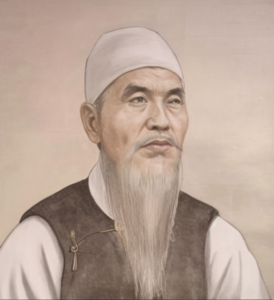
Wu Zhong (吴钟, also known as Wu Hongsheng 吴弘声) was born in 1712 in Houzhuangke Village, Qingyun County which at the time it belonged to Tianjin prefecture of Zhili province (today it is Shandong) . His father (Wu Tianshun, 吴天顺) died when he was around eight years old and his family suffered in poverty, as a result his mother sent him away to Mengcun under the care of his elder niece. Wu Zhong was a bright and diligent child and grew to adore martial arts. He recited scriptures at the local Qing Zhen Si (Mosque) where he also practiced some boxing methods with local masters (the Hui Zu have a large array of martial arts such as Liuhe Quan and Cha Quan at the time) which have been practiced since Ming Dynasty times and likely to be the atypical style practiced by Wu Zhong). At age 15, Wu Zhong trained under Ma Shengbiao in the Taizu Quan system for over eight years.
Wu Zhong had excelled in understanding the essence of combat after practicing with many masters, especially mentioned are two wandering monks Lai (癞) and his disciple Pi (癖). In 1727, it is also said that a Daoist Master Lai Kuiyuan (赖魁元) from Shanxi, taught the Liuhe Spear to Wu Zhong. In some Cangzhou records although difficult to verify, Wu Zhong is said to have studied under Zhang Sicheng (張四成, 1648-1739), a disciple of Ding Faxiang (丁發祥, 1615-1694) who was a well known Hui martial artist that had practised Cha Quan, Tan Tui and Chuojiao. Inevitably, Wu Zhong consolidated his methods, derived his own style on that understanding. The method at the time did not have any name as it was just a derivation of Wu Zhong so it was often referred to as Wushi (Fighter Wu’s style) or later as Wu Jia Quan (Wu Family Boxing).
A story of Wu Zhong’s travels articulates that Wu Zhong travelled around southward and had actually visited the Shaolin Temple. In an exchange of Skills the Shaolin monks were impressed by Wu Zhong’s Spear Techniques (Liu He Spear). He received praise from senior monks and officals that were there, and since was named “Super Spear wielding Wu Zhong” and along with two other masters Kang Dali (康大力. expert of Duan Da and Chin Na) and Li Zhang (李章, famous for his broadsword techniques, Tiliu Dao 提柳刀 ), were known as the “3 Outstanding Martial artists”. He became good friends with his martial colleagues. After the fame the imperial court sought Wu Zhong out and after many duels to prove his skills he became the teacher of the 14th son (Yin Ti) of the Kangxi Qing Emperor. He then gained fame as “From Nanjing to Yanjing (Beijng), Wuzhong is number one”. Many wondered about his nameless boxing methods.
In 1775, Wu Zhong returned to Mengcun, he took care of his mother and family, also teaching his boxing skills to the Wu Family (吴家拳 – Wu Family Boxing). Wu Family boxing was said to consist of 3 fists (Xiaojia, Duijie & Silangkuan), Tiliu Dao (Saber) and Wanderer’s (Monkey) Staff. Although many studied aspects of his skills, it was only his direct family that received the full transmission. These included his daughter Wu Rong, his grandson Wu Zhongyu and his adopted son Wu Ying. In 1790, Wu Ying systematically recorded the contents of the boxing into a manuscript, he also assigned the name “Bajiquan” (吴氏开门八极拳,Wu Shi Kai Men Bajiquan to be exact) to the methods to ensure that the nameless method would not be lost into history. In the manuscript it clearly states that Bajiquan did not exist prior to this time and that the name was derived for the preservation of this most important set of skills. The great Master Wu Zhong passed away 1802.
Second Generation Bajiquan Masters
2. Wu Rong (吴荣,1764-1839), was from Houzhaungke (today in Qingyun County, Shandong). The daughter of Wu Zhong (he had no sons) and as she was the person likely responsible to assist in teaching (as when Wu Zhong returned he was already over 60), thus although Wu Zhong taught many, she is noted as the key inheritor of Bajiquan. Wu Rong had married Dai Yueyi who was a pracitioner of various other arts (Taizuquan, Chahuaquan, Erlangquan) based arts, as a result she incorporated some of those techniques into Bajiquan. The techniques from those include Hua Quan, Liujiao Shi, Taizu Quan. Taizong quan, Feihu Quan, Dual set Taohua San which all were incorporated into Wu Family Bajiquan. Wu Rong would help Ding Xiaowu and Wu Yong to teach their disciples. She also taught some of the family clan members including nephews, nieces and her great grandson Wu Qilong (吴起龙), who preserved the skills of the Liuhe Spear and Bajhiquan.
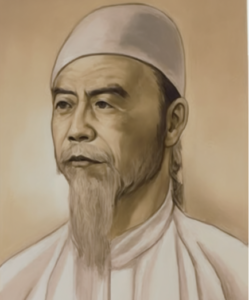
2. Wu Ying (吴溁.1762-1843), sometimes also known as Wu Yong (吴永). Wu Ying was recognized as a descendant of Wu Zhong by adoption.
Wu Ying was an extremely bright and capable young man, acquiring much of the Bajiquan skills he became an important figure in Bajiquan as he was responsible for the compilation and systematic recording of the respective practices of Bajiquan into a manuscript. It is said that Wu Zhong in his latter years became very fond of Wu Ying and taught as much as he could to him.
The dissemination of Bajiquan was also predominantly through Wu Ying to the next generations, he taught many but most notable are his thirteen key disciples which consisted predominantly of family members, these included:
Yang Deyuan, Wu Kun (his son but unfortunately passed away 3-4 years old from smallpox), Wu Kai (his nephew), Jiao Wenming, Gao Mingshan (from Luotuan village), Li Dazhong (from Luotuan village), Zhang Keming (from Luotuan village), Wu Lingchun (his grandson), Wu Tongyun (his grandson), Wu Lingyun (his grand nephew), Wang Changxi and Wang Shitong.
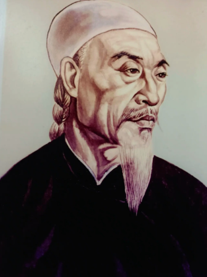
2. Ding Xiaowu (丁孝武 1775-1848). Ding Xiaowu was born in Mengcun Town and practiced martial arts since childhood. Wu Zhong fell ill while traveling in Mengcun Town. Ding Xiaowu and Wu Yong took good care of him and Wu Zhong accepted them as his disciple. After the two insisted on asking him,
Wu Zhong went to Dingwu Second Hospital in Mengcun Town in the 56th year of Qianlong (1791) to teach Bajiquan, Liuhe spear and other skills. Ding Xiaowu was most experienced in spear. After the skills were perfected, Ding Xiaowu and Wu Yong both opened a training ground in Mengcun Town respectively, and the disciples regarded Mengcun Town and Luotuanzhuang as the successors. Ding Xiaowu’s disciples included his clansmen Ding Zhantian, Ding Huaide, Ding Shangpo and Luotuan Li Dazhong (not Li was a disciple of both Wu Yong and Ding Xiaowu).
Third Generation
3. Wu Kai (吴恺,1812-1882) was considered a standard bearer of the style, yet he had strict standards and was very reserved in teaching the style (essentially all were family) and had only seven key disciples: Wu Baorui (1851~), Wu Linshu, Wu Baoxuan, Liu Qingpan, Zhang Wenhe (1865-1934) and Wu Xiaowu.
3. Li Dazhong (李大忠 1810-1874)
Li Dazhong was born in Luotuan, Dongnan, Cang county. He has practiced martial arts since young and his teacher Wang Shitong introduced him to Ding Xiaowu in 1840. Since Li was Han Chinese, Ding checked with his elder, Wu Rong (Wu Zhong’s daughter) on teaching him, but was later accepted fully. In Mengcun when Wu Yong was visiting, he was also impressed by Li Dazhong. As a result Li became a disciple of both Ding Xiaowu and Wu Yong, occasionally obtaining instructions from Wu Rong as well. His teacher Ding Xiaowu became ill and Li took care of him, then inheriting the Bajiquan system and the Spear/Boxing manuals. In 1847 after 7 years of daily training , Li returned to Luotuan and opened the Luotuan Bajiquan Training School there.
Fourth Generation
Some of the key fourth generation include Li Guizhang 李贵章 (1855-1927), Zhang Jingxing 张景星 (1812-1882), Huang Sihai 黄士海 (1829-1914) as well as the Wu family members, Wu Linshu 吴麟书, Nephew of Wu Kai and Wu Baorui 吴宝瑞 (1851-1906) Nephew of Wu Kai.
Wu Family Bajiquan
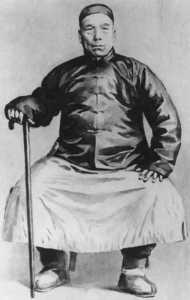
5. Wu Huiqing (吴会清,1869-1958), was the inheritor of Wu family Bajiquan having studied with his granduncle Wu Kai (吴恺 ,nephew of Wu Ying) for a while and then also with his uncle Wu Baorui and Wu Linshu (student of Wu Kai). He studied with his uncles for many years and also had acquired knowledge of other styles which he incorporated such as Piguaquan and the Jiu Gong Chun Yang Sword. The original Xiaojia was expanded into 3 sets of Xiaojia, he developed Hei Hu Quan (Black Tiger Boxing set), Pigua Qinglong set, Double sabers, saber vs spear, three sectional staff vs spear and so on. He also was known for his Tie Sha Zhang (Iron Palm).
Wu Huiqing broke the traditional concept of “teaching boxing without imparting boxing principles”. While teaching disciples, he also focused on theoretical explanations and practical explanations of techniques. Because the ancestral boxing manual was damaged by the war on the 16th day of the twelfth lunar month in the 13th year of the Republic of China, with the help of fellow disciple Qiang Ruiqing, the second reordering of the “Wu Fuxing” in Mengcun Town, Hebei Province began on the 16th day of the 19th lunar month in the 19th year of the Republic of China. “Publica of the Secrets of Bajiquan”, Bingzi Duanyue completed the revision in the 25th year of the Republic of China (1936), and printed it in ten volumes, leaving precious historical information for future generations. He recruited many disciples and made positive contributions to expanding the spread of Baji Quan in Cangzhou.
He was both capable and well educated, having ensured that his students understood both the practice and the theories of Bajiquan. During his life he taught many but also was the keeper of the family and boxing records, which he revised and added many further boxing theories to. In Mengcun, he is a key propagator of the art and the most significant teacher of his generation. In 1955, Mengcun Hui Autonomous County in Hebei Province was established, and Wu Huiqing was elected as a deputy to the county People’s Congress. He passed away in Mengcun on the twelfth day of the second lunar month in 1958 at the age of 89.
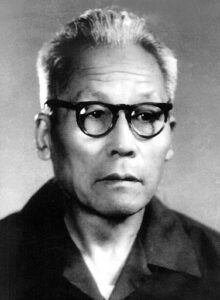
6. Wu Xiufeng (吴秀峰, 1908–1976) was the eldest son of Wu Huiqing and suffered from deafness in his childhood. As a result, he was more determined and dedicated in his practice of Bajiquan; he acquired excellent skills and became a capable fighter. In 1926, he started teaching around Mengcun, in Song Zhuangzi Village and Jiangguantun Village (Wu Delong 吴德龙 , Wu Zhaohai 吴兆海 (1912-1988) and Feng Jingshan 冯景山 (1912—1994) were some of his early disciples. In 1929, with his father’s endorsement, Wu Xiufeng travelled across the southern areas of Shandong, Shanghai, Jiangxi, Zhejiang, Guangdong, Henan, and many other places. He made friends in the martial arts community and sold skills as a trade. In Jiangxi province, he was for a short time the head coach of the Hong Jun (Red Guards—this was in the early stages of their formation), then carried on exploring the territories. In 1931, Han Huachen and Zuo Shuangchen invited him to teach in Zaozhuang city, Shandong. In 1933, he moved to Tianjin and set up a training area there. His Bajiquan and Tiliu Sabre became renowned at that time. Many martial experts came to become his students. 1934 saw the professional teaching of many workers and locations throughout Tianjin. Influencing many martial arts communities throughout Tianjin. He established the “Tianjin Building a Nation Martial Arts Society” in Tianjin.
He learned from others and took in the good points of other schools, thus It was during this time that he also developed Bajiquan even further creating many sets and theories. In 1941 he was arrested by the Japanese army and he escaped, saving many comrades at the time. He helped the army to obtain medications and artillery, a true patriot. After the founding of new China in 1956, he received a special medal for his martial arts from the head of the Sports Commission. In 1958, he started working in Tianjin and retired in 1968 from his job at a paper factory. After the cultural revolution, he focused on medicine and martial arts.
He passed away in 1976 and left an enhanced and comprehensive system of Bajiquan, including many combat principles and technique developments that were formulated into sets like the Xiaojia (Small Frame), were enhanced to up to 12 subroutines; the 24 Lianshou (24 Linked hands), Shier Bao Xing (12 embraces), Fushou Duida (Combined set), Luohan Gong, Eight Immortal Sword, the Green Dragon Sword and the Turning Gate Spear are examples of his additions and developments.
7. Xing Huating
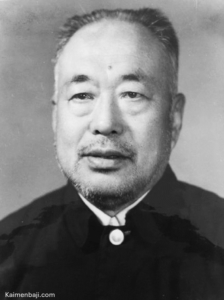
Xing Huating’s father Xing Yuqing initially learned Bajiquan from Li Fengxiang. When he was young, he met Wu Xiufeng by chance. The Wu and Xing families were old friends. When they chatted, they talked about martial arts. So the two of them competed with each other. After several fights, Wu defeated Xing. Xing Yuqing was convinced and admired him. Despite repeated refusals, he insisted on becoming Wu Xiufeng’s disciple. He became one of Wu Xiufeng’s first disciples. Xing Yuqing came to Tianjin from his hometown in the 1930s to make a living by doing business. He was a righteous man who was good at making friends with martial arts colleagues. He had a Mengchang style. For example, Tianjin Bajiquan masters Fan Qingyun, Su Baosen, Sun Huanwen, Tian Jinzhong, Wang Jingxiang, Huang Qishan, Li Liangchen, Wang Xuemeng, and martial arts experts from other schools such as Guo Shouchen, Dong Yitai, and Wu Mengxia often interacted with him. Xing Huating was influenced by the martial arts family tradition since he was a child and received guidance from many capable teachers. Since the early 1950s, he has been with Mr. Wu Xiufeng in Tianjin for more than 20 years. Especially after his father Xing Yuqing passed away, Mr. Wu Xiufeng felt sorry for his early death and felt guilty. He was moved by the father and son Xing’s persistence in martial arts and respect for teachers. From then on, he regarded Xing Huating as his own son, and finally inherited the mantle under the guidance of Mr. Wu Xiufeng. Xing Huating became Mr. Wu Xiufeng’s oldest and last disciple. He is both virtuous and artistic, and has an open mind. He is well-known in the martial arts community in Tianjin.
Mr. Xing Huating has made certain achievements in the study of Bajiquan theory (boxing theory). He connects traditional theories such as Yin-Yang and Five Elements, I Ching and Eight Diagrams in Bajiquan with Chinese medicine, military tactics and modern disciplines such as mechanics, philosophy, geometry and physics, and interprets them in a simple and easy-to-understand way in popular language. He pays attention to guiding practice with theory, that is, the boxing theory should play a direct guiding role in practice and application, and verify the embodiment of boxing theory in actual practice and combat. He emphasizes that the gap between practice and application should be small rather than large, and the movements should be simple rather than complicated, and practice should be applied.
The famous martial artist Mr. Zhao Fujiang once praised: “Huating’s boxing and kicking are the model of Bajiquan” and “He is the standard of Bajiquan.” In the late 1950s, Mr. Xing Huating’s boxing and kicking had become the best in Tianjin. He was not conservative and taught tirelessly to students. Some of his key disciples include M. Chen Jingqi and Zhang Limin.
7. Wu Lianzhi
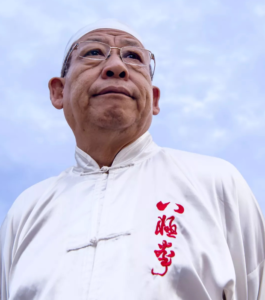
Wu Lianzhi is the son of Wu Xiufeng. M Wu was born in Mengcun, Cangzhou, Hebei province. He received direct instruction in Bajiquan from his father but also whilst away in Tianjin teaching, his father’s early disciples Wu Delong and Wu Zhaohai who resided in Mengcun nutured the foundation of Wu Lianzhi’s martial arts. His father would then return a few times during the year and instruct his son and disciples together in Mengcun. After his father’s passing when Japanese researchers came to Mengcun they found Wu Lianzhi and he became well renowned teaching in Japan and other international locations. Even become the reference for a video game “Virtual Fighter”.
Since 1987, M Wu has been a major force in spreading Kaimen Bajiquan around the world, and now has coaches and masters who have trained under him throughout all of China including Hong Kong & Taiwan, as well as in Japan, South Korea, Singapore, France, Belgium and Italy. He has toured internationally giving conferences and workshops at martial arts schools as well as by receiving students in Mengcun.
M Wu and his disciples also gathered the various disciples of his father to help bring all of the consummate knowledge back to Mengcun and the next generation of Bajiquan practitioners.M Wu has written on the theoretical and technical research of Bajiquan. He has published three works of “Wu KaiMen Bajiquan” in Japan; published and distributed the first “Chinese Traditional Martial Arts Series Regulation Routines-Bajiquan” in Japan. There are more than 20 teaching VCDs issued in Chinese and Japanese. With more than ten technical papers on Bajiquan explaining the principles of mechanics, he is currently one of the most influential martial artists in the Chinese martial arts world. Together with his son, Wu Dawei and disciples they developed the International Bajiquan Training Centre in Mengcun, bringing enthusiasts throughout the martial arts world to further the dissemination of Bajiquan. His calligraphy is found throughout Mengcun, which has become a Bajiquan enclave , where many of its locals practice Bajiquan of all ages.
Luotuan Bajiquan
5. Han Huiqing (韩会清, 1887–1937)
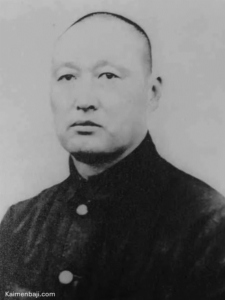
Hua Huiqing was from Luotuan village, Hui nationality studied from a young age with Master Zhang Jingxing. An extremely talented practitioner and representative of Luotuan. He was admired by the local people for his morality, scholarly and martial skills. There were many stories of his feats like a single palm to displace bricks in a wall, smashing slabs of ice or how he could grab a high spinning well pully at an instant ceasing its spin. He practiced continuously even when working on the family farms he would practice Chuang Bu (charging step of Bajiquan). In 1912 at the invitation of Ma Fengtu (his younger training brother) he took a coaching position at the Shenyang Police Academy. Here he continued to expound Baji after his seniors (Li Shuwen and Huo Diange had worked for the same General in Harbin). In 1920’s he worked as a guard of a mine in Zaozhuang, he accepted Li Xueyi and Zhao Ronglin as students then.
In 1928 they head south (Han and his students) and together with Ma Yingtu fought in the October 1928 National Combat (Leitai) competition. Han defeated over 30 opponents, each time with only a single blow usually maiming them having to be escorted off in stretchers. He became known as the “Invincible General”. Ma Yingtu was similarly unstoppable and as a result of political issues neither Han or Ma were allowed to continue, and they were excluded from the competition. However their performance one the praise of the organizers and thus Han Huiqing was appointed a teacher at the Nanjing Zhongyang Guoshu Association. At the time the famous Wang Ziping and Tong Zhongyi were responsible for Shuaijiao competitions whilst Han Huiqing and Ma Yingtu were responsible for the hand to hand combat competitions. His influence was so great that at the time there was also another saying, “in the South Han, in the North Li” referring to the superiority of the two masters, Han Huiqing and Li Shuwen. Master Han Huiqing passed away from Heart failure in 1937. Many studied with Master Han and became bodyguards thus sometimes the nickname ‘Bodyguard Boxing’ is given to Bajiquan. Some of his most well known earlier students included Zhao Shude, Li Xueyi, Zhao Ronglin. His other students included Dong Yiqing, Wei Hongen, Dong Huiting, Liu Hanzhou, Shen Zhongshan, Zhang Ziting, Zhang Zhendong, Dong Yiwen, Yao chunfu, Shang Guanting, Han Longquan and his son Han Jiquan. His son Han Jiquan (1909-1994) spread the art further to his daughter Han Zhenge and sons Han Zhenhai, Han Zhenjiang, Han Zhende as well as students from places such as Hebei, Shandong and Fujian province.
5. Li Shuwen
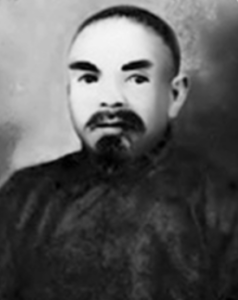
(李书文,1864-1934), was from Nanliang village (some references also suggest Changsha in Cang County). As a result of poverty when he was young he was sent to an Opera Group to study. As a result of injuries from the difficult training he returned home where he commenced practicing Bajiquan under the tutelage of Huang Sihai (Student of Zhang Keming). He disliked the opera very much then but the discipline allowed to become an excellent practitioner of Bajiqiuan.
When Yuan Shikai was training the Beiyang New Army in Xiaozhan Town, Tianjin, he heard about Huang Sihai’s fame and sent someone to hire him as a martial arts coach. Huang Sihai declined due to his old age and recommended Li Shuwen to go. Li Shuwen’s reputation gradually spread in Beijing and Tianjin. In 1910, the Tianjin Chinese Warriors Association was established. Zhang Jingxing, a disciple of Baji Quan, led Wang Zhongquan and Li Shuwen to serve as teachers in the Warriors Association. Li Shuwen was the most famous, having sworn sworn brothers with Li Ruidong (Chuojiao and Li Style Taijiquan) and Li Cunyi (Xingyi Quan). Li Ruidong exchanged some of his Jingang Quan with Li Shuwen.
Li Shuwen made good friends with many generals who came from the Beiyang New Army, including Xu Lanzhou, Li Jinglin and Zhang Xiangwu who later joined the Fengjun Army. He often stayed in their houses for a long time. In 1907, Xu Lanzhou hired him as the army’s chief instructor. In the early years of the Republic of China, he went to Feng Guozhang’s mansion to teach martial arts. In 1925, Li Jinglin hired him as the chief instructor of his army, and he went with his disciple Huo Diange. In 1926, he took Li Etang and Wei Hongen to the naval office of Shen Honglie in Shandong Province as a martial arts coach. In 1927, Zhang Zhijiang founded the Central Academy of Chinese Martial Arts in Nanjing, and Li Shuwen was hired as a consultant. In 1929, Xu Lanzhou donated money to establish the Hebei Martial Arts Museum and hired him as its general consultant. He was asked to take part in the provincial martial arts exam in the spring of 1933, which was organised by Shandong Provincial Chairman Han Fuju. He also performed Chunyang Sword, Bajiquan, and Liuhe Daqiang in addition to acting as a referee.
He was regarded as the “Spiritual Spear Li” because of his proficiency with the spear. Li Shuwen was an example of the aggressive nature of Bajiquan as in many challenges in his youth, he would kill or critically maim opponents. As an example, when he was at a banquet where his employer introduced some other martial artists who were being considered for employment and asked to cross hands, he showed the opponent the exact technique that he would use, then at the time of the dual in a matter of seconds, the palm struck the opponents head cracking the neck and knocking the eyeballs out of the socket leading to instant death. This resulted in Li Shuwen obtaining a feared reputation but also having many seek his death in revenge. Towards the end of his life, Li Shuwen lived in constant fear and paranoia, and then many years later one day on his return from Shandong to Cangzhou itis said he was indeed poisoned to death. He taught many students, even though there were also many not willing to train with the rough aggressive Master. Those that did however excelled and became masters in their own right. Some of these include: Huo Diange, Huo Diankui, Xu Lanzhou, Ren Guodong, Zhang Xiangwu, Han Huachen, Liu Hechen, Dou Shilong, Na Yukui, Liu Chendong, Liu Yunqiao and Zu Zhiqing.
Huo Family Bajiquan
6. Huo Diange
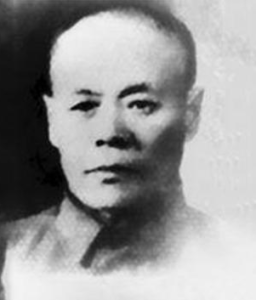
(霍殿阁,1886-1942), also known as Huo Xiuting, was born in Xiaoji Village, Cang County (today a part of Nanpi County). Since a young age Huo Diange enjoyed martial arts and had practiced Piao Sa Boxing with local teachers. Later at age 17 he became a student under Master Li Shuwen studying Bajiquan and Liuhe (Six Harmonies) Spear. He practiced with diligence for over 12 years and was well favored by the highly demanding teacher Li Shu Wen. After Master Li Shuwen went travelling. Huo Diange then started teaching in Tianjin (Zhong Xin Park) and later he met some influential friends which then influenced him to later joined the army which took him to place like Harbin, Shengyang and Changchun, in each of those places he passed on his Bajiquan leading to many inheritors. In those years he also for some time became Bodyguard of the last emperor of China Pu Yi. In 1924 he moved to Tianjin and taught there. In 1926 he caught up with his teacher Li Shuwen and when training together he understood some new key concepts which he then formulate a new advanced set of ‘Ying Shou Quan’, which was later to become a standard for Huo Family Bajiquan. As a result of issues with the Japanese in 1927, In 1932 he moved to Chang Chun trying to setup there, then a few years later his friend (a Chuojiao Master Zhou Xinwu (周馨武), a senior from his official posts) arrived and together with his son Huo Qingyun helped to propagate and develop Huo Family Bajiquan. Students of Huo Diange include: Huo Qingyun, Huo Qingfeng, Huo Qingshan, Jiang Cangyong, Song Bishan, Zhao Bingnan, Yang Bin, Li Baoshan, Liang Zhenqi, Luo Junshan, Mao Hongen, Xu Yusheng, Chu Yixin, Zhou Zonggui, Lei Zhanfeng and Miao Yuchun. Huo Qingyun (1905-1987), was the son of Huo Diange and was instrumental in promoting his fathers Bajiquan and with the help of his father’s other students like Chu Yixin and Zhao Bingnan opened schools across North Eastern China (Changchun, Shenyang, Dalian and Harbin) to propagate the Huo Family Bajiquan.
6. Xu Yusheng (许禹声, 1907-1987), also known as Xu Mingzhong was from Xiaoliu Village, Tianjin. At a young age he studied Luohan boxing for four years with local boxer Su Wanhe. Later one of Qiang Ruiqing’s disciples Fan Qingyun (樊清云) was teaching in the nearby areas and Xu Yusheng studied Bajiquan Xiaojia and Duida for over three years. In 1926 he became accepted under the tutelage of Huo Diange and Li Shuwen in Tianjin. Whom demanded strict standards, which after a while Xu Yusheng became an expert and helped to establish schools in North China alongside his colleagues Zhao Yuting and Sun Yulong. After time, he was taught the complete system of Bajiquan as well as Yijin Jing, Pigua Zhang and Liuhe Daqiang (Spear), Broadsword, staff and more, becoming an indoor disciple of Huo family Bajiquan. As part of the National Guoshu activities for Huo Diange, he became exposed to martial arts practitioners across many areas including Hebei, Shanxi, Beijing and Tianjin.
In the 1930’s he became well known in Tianjin , as when Huo Diange went to Dongbei in 1932, Xu Yusheng remained in Tianjin where the Japanese had started to take over. Xu Yusheng joined the battalion of General Song Zheyuan, who were famously known as the Big sword group defending the Northern areas of China. There many confrontations, and in 1937, during the Lugou bridge incident, Xu Yusheng was injured by artillery. In 1938 he was sent to Changchun, Dongbei and he was fortunate to see his master Huo Diange, but soon after he joined his martial brothers in Heilongjiang fighting the Japanese, the battle was torturous, and although their battalion lost, the Japanese sustained much deaths and injury. In his late years Xu Yusheng had taught Bajiquan with both strict demanding standard, but without reservation emphasizing practical combat skills.
Notable others:
Ma Family Bajiquan – From the Ma brothers Ma Fengtu (马风图,1888-1973) and Ma Yingtu (马英图,1898-1956) , they studied many arts including Piguazhang, Chuojiao, Tongbei and Fanzi in addition to Bajiquan. The Bajiquan is derived from their studies with Zhang Jingxing.
Ji Family Bajiquan – This line was commenced by Ji Yunlong (季云龙,1857-1942) , was from Langkouer village, Cangzhou. Ji Yunlong studied his family taught martial arts (Huaquan/Yanqingquan) in his youth and later became a disciple of Liu Huchen (had studied under tutelage of Wang Changxi) studying Bajiquan.
Qiang Family Bajiquan – From Qiang Ruiqing (强瑞清,1861-1947), from Zilaitun village in Mengcun county, studied Bajiquan with Cao Jingtian (who had studied with Wang Changxi) from Chengjialin village and later married Cao’s grandaughter Cao Jianying. He became representative of Zilaitun village Bajiquan and was well acquainted with masters of his generation like Wu Huiqing.
Outline of Taiping Bajiquan

Bajiquan although fairly simple on the onset internally includes alot of deep concepts and theory to support the development of power and techniques. Some of the obvious features are the unique stepping that aggressively enters an opponents high risk zone, the well conceived elbows and of course the powerful opening palms that foil any attempt to attack by opponents. The rooting and explosive full body power development takes quite some time master and the sequence of practice ensures the most beneficial outcome. Our practice is of both Huo and Wu Family Bajiquan, it also encompasses Piguazhang. Taiping Bajiquan is from the teachings of Zhou Yuxiang (Xu Yusheng’s student), Wu Lianzhi (Wu Xiufeng’s son), Wu Dawei (Wu Lianzhi’s son), Xu Ruicai (Feng Jingshan’s disciple), Kang Enping (Yang Weilong’s disciple), Chen Jingqi (Xing Huating & Liu Xinghua’s disciple), Wang Zhihai (Guo Ruixiang’s disciple, specifically for Piguazhang) and Zhang Limin (Xing Huating’s disciple). We adhere to the principles of GM Wu Xiufeng and Xing Huating, that the gap between practice and application should be small rather than large, and the movements should be simple rather than complicated (or worse, artistic), and practice should be directly applicable to combat.
Training in Bajiquan commences with some general body developing exercises and Zhuang Gong (Standing/stance training) since it is the essence on which a good foundation can be built given that so much of Bajiquan’s power is derived from a strong, agile and stable root. This practice includes the learning of the different stances but most importantly is the standing in the Xian Tian Zhuang ( Horse stance), which also has strict requirements on how to sink the hip, round the chest and hold up the back relaxing each aspect whilst maintaining firm structure.
- Xian Tian Zhuang (先天桩 Pre Heaven Standing Posture), also known as Liang Yi Zhuang
- San Xing Zhuang (三星桩 Three Stars Standing Posture)
- Shi Zi Zhuang (十字桩 Intersectional Standing Posture)
After the foundation stances and transitions thereof, some stepping methods are then gradually introduced, of which the most important are Zhen Jiao, Chuang Bu, and Xun Bu. At the same time, students learn various upper-body exercises that provide the foundation for later techniques. Upon successfully grasping some of the basic stepping and motion concepts, some of the important Kau Zhuang, which are knocking motions against opponents or other matters, are practiced. Here this reinforces the Zhuang Gong, as the movements and impacts ensure good stability of footwork and rooting of stance. Some of the Kau Zhuang as examples include:
- San Kau Bi (Three Closing in Arms)
- Kau Jian (Closing in shoulders)
- Kau Bei (Closing in Back)
- Kau Kua (Closing in Hips)
- Kau Zhou (Closing in Elbows)
Fundamentals: Dan Cao
While these are arranged as key techniques as per the below, including Jingang Bashi (金刚八式), there are a larger number of Dan Cao (single techniques) practiced.
| 撑锤 Cheng Chui 扑面 Pumian Zhang 降龙 Xiang Long 伏虎 Fu Hu 劈山 Pi Shan 圈抱 Quan Bao | 探马 Tan Ma 虎抱 Hu Bao 胯打 Kua Da 黑虎提 Heihu Ti 穿抱 Chuan Bao 龙拿 long Na | 项捶 Xiang Chui 抽别子 Chou Biezi 大缠 Da Chan 顶肘 Ding Zhou 单阳打 Danyang Da |
Liu Da Kai
Liu Da Kai are the way that essential combat principles of Bajiquan are first practiced in order to understand the wider concepts. These include Ding (顶 Pressing), Bao (抱 embracing), Dan (单 Singles), Ti (提 Lifting), Kua (挎 Closing) and Chan (缠 Wrapping). When this are practiced, they are sometimes represented by key techniques such as Ding Zhou (Pressing Elbow), Bao Zhou (Embracing elbow), Dan Yang Da (Single Strike), Ti Zhou (lifting Elbow), Kua Da (Hip Strike) and Da Chan (Large Wrap). In reality, however, the Liudakai are expressed throughout bajiquan and determine the keys of power generation. The compression and expansion, the power inwards and outwards, the fast, the vertical, the horizontal, and the coiling. Alongside a few other key principles, such as the three plains striking at once, Liu Da Kai is the essence of Bajiquan.
Routines and Techniques practices.
In the original Ba Ji system of Wu Zhong’s time, there were not as many sets as there are in some of the lines today. Many of the latter descendants either studied other martial arts with which they supplemented Bajiquan or, through their own experiences, added additional methods, approaches, and techniques.
Foundation and Essential Core
- Baji-Xiao Jia (小架 / 八极架子), 3 main sets of Xiaojia as core (also up to 12 sets of Xiaojia, also known as Shier Ji, 八极十二极)
- Baji-Da Jia (大架 / 八极拳)
- Si Lang Kuan (四朗宽) & Si Lang Ti (四郎提)
Advanced and Combination Practices
It is important to note that, while there are many different practices and combinations, the foundation and essential core are the most important for mastery. Quality is more important than quantity. The additional methods are more of a specific technique emphasis or a legacy left by different masters that has both practical and often also cultural value. Everyone chooses their journey. As inheritors of Bajiquan, we have had to learn the complete system and thus have these as part of the curriculum.
| 八趟应手 Yingshou 八趟连手 Lianshou 八趟连肘 Lianzhou 六大开拳 Kai Quan 六开缠靠 Chankao 六开趟子 Tangzi 八大招式 Badazhao | 十二极 Shier Ji 十二形批 Shier Xing Pi (又称行劈) 十二形抱 Shier Xing Bao 十二大提 Shier Dati 二十四翻手 24 Fan Shou 二十四连手 24 Lian Shou 二十四连势 24 Lian Shi | 黑虎拳 Heihu 飞虎拳 Feihu 罗汉功 Luohan Gong 太宗拳 Taizhong 太祖拳 Taizu 劈挂拳 Piguaquan 青龙拳 Qinglong 华拳 Huaquan | 六合手 Liuhe Shou 四大掸 Si Da Dan 八翻手 Bafan Shou 起手翻 Qishou Fanzi 叠手翻 Dieshou Fan 八顶八式 Ba Ding Ba Shi 八顶肘 Ba Ding Zhou |
Combat Dual Sets
| 六肘头 Liu Zhou Tou 八极对接 Baji Dui Jie | 六步钩 对接 Liubugou 桃花散 对接 Taohuasan | 罗汉功 对接 Luohan Gong 八趟扶手 对接 Baji Fushou |
Post Exercises
- Qixing Zhuang (七星桩 Seven Star Posts)
- Jiugong Zhuang (九宫桩 Nine Palaces Posts)
Internal Cultivation
- Yijin Jing (Tendon Changing, 易筋经)
- Yigu Jing (Bone/Structural Changing, 易骨经)
- Yisui Jing (Marrow Changing, 易髓经)
Weapons
| 行者棒 Monkey King Staff 八回头棍 Short Stick 提柳刀 Raise the Willow Leaf Saber 六合刀 Six Harmonies Saber 四门刀 Four gates Saber 万胜双刀 Double Saber 扑刀 Long handled saber | 六合花枪 Six Harmonies Flower Spear 六合洪枪 Six Harmonies Red Spear 梨花枪 Peach Flower Spear 子龙枪 Zilong Spear 断门枪 Breaking the gate Spear 转门枪 Turning around the gate Spear 六合大枪 Six Harmonies Long Spear | 九宮純陽剑 Chunyang Sword 青龙剑 Green Dragon Sword 八仙剑 8 Immortals Sword 瘋魔棍 Mad Devil Staff 飘摇刀 Long Sabre 春秋大刀 Spring Autumn Long Handled Sabre 护手钩 Hook Swords |
Weapon Dual Sets
| 行者棒对练 Staff vs Staff 八回头短棍对练 Short Stick vs. Short Stick 刀进刀 Sabre vs Sabre | 大刀檎枪 Long-handled sabre vs Spear 双手带进枪 Two-handed Broad Sabre vs Spear 三节棍进枪 Three-section staff vs spear | 双刀进枪 Double sabre vs spear = 枪进枪 Spear vs spear |
